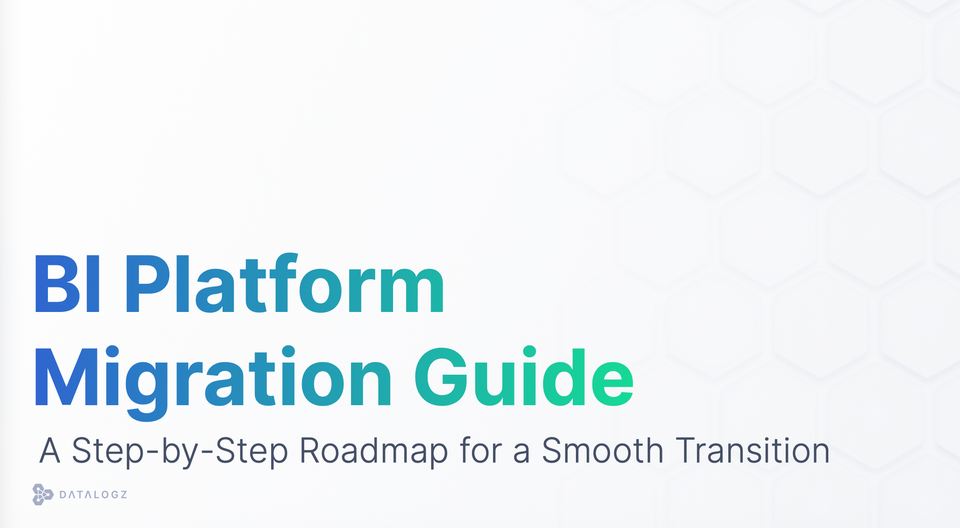How to Optimize your BI Environment for Scalability?
Optimizing your BI environment for scalability is critical in supporting organizational growth and change.

Business Intelligence (BI) is critical for organizations to make informed decisions and remain competitive in today's market. As organizations grow and evolve, their data requirements also increase. It is essential to optimize the BI environment for scalability to meet the changing needs of the organization. Scalability in BI refers to the ability of the system to handle increasing amounts of data and user demands while maintaining performance. In this blog post, we will discuss how to optimize your BI environment for scalability and the importance of doing so.
Scalability Considerations
Scalability considerations are critical in BI systems to ensure that the hardware and software infrastructure, data architecture, and system architecture can handle the increased data volumes and user demands.
Hardware infrastructure is the foundation of any BI system and includes servers, storage devices, and network components. It is essential to consider the hardware requirements for scalability and ensure that they can handle increased data volumes and user demands.
Software infrastructure includes the operating system, database management system, and BI tools. Choosing the right software infrastructure is critical for scalability. The software should be capable of handling the increased data volumes and user demands without impacting performance.
Data architecture plays a crucial role in BI scalability. A well-designed data architecture can handle large data volumes and provide efficient access to data. The data architecture should be flexible enough to accommodate changes in data volumes and user demands. It is essential to consider the data architecture's scalability requirements and ensure that it can handle the increased data volumes and user demands.
System architecture is another critical consideration for BI scalability. The system architecture should be designed to handle the increased data volumes and user demands while maintaining performance. It is essential to consider the system architecture's scalability requirements and ensure that it can handle the increased data volumes and user demands.
Performance Monitoring
Performance monitoring and benchmarking are essential for optimizing BI systems for scalability. Performance monitoring involves tracking the system's performance metrics, such as response times, query times, and data loads. Performance benchmarking involves comparing the system's performance metrics against industry standards and best practices. Performance monitoring and benchmarking can help identify performance bottlenecks and areas for improvement. It is essential to establish performance monitoring and benchmarking processes to optimize BI systems for scalability continually.
Capacity Planning
Capacity planning is critical in ensuring that BI systems can handle increased data volumes and user demands. Capacity planning involves estimating future data volumes and user demands and designing the system's infrastructure to handle them. Capacity planning should be based on realistic estimates and should consider the hardware and software infrastructure, data architecture, and system architecture. It is essential to consider the capacity planning requirements continually and ensure that the system can handle increased data volumes and user demands.
Continuous Improvement
Continuous improvement is essential for optimizing BI systems for scalability. Continuous improvement involves monitoring system performance, identifying areas for improvement, and implementing changes to improve the system's scalability continually. It is essential to establish continuous improvement processes to ensure that the system is optimized for scalability continually.
Optimizing your BI environment for scalability is critical in supporting organizational growth and change. Scalability considerations, such as hardware and software infrastructure, data architecture, and system architecture, are essential in ensuring that the system can handle increased data volumes and user demands. Performance monitoring, capacity planning, and continuous improvement are also critical in optimizing BI systems for scalability. By following these best practices, organizations can ensure that their BI systems are optimized for scalability and can support their changing data requirements.
Key Takeaways:
- Scalability is critical for BI systems to handle increased data volumes and user demands while maintaining performance.
- Hardware and software infrastructure, data architecture, and system architecture are essential considerations for BI scalability.
- Performance monitoring and benchmarking are crucial for identifying performance bottlenecks and areas for improvement.
- Capacity planning involves estimating future data volumes and user demands and designing the system's infrastructure to handle them.
- Continuous improvement is necessary to optimize BI systems for scalability continually.
- By following these best practices, organizations can ensure that their BI systems are optimized for scalability and can support their changing data requirements.



